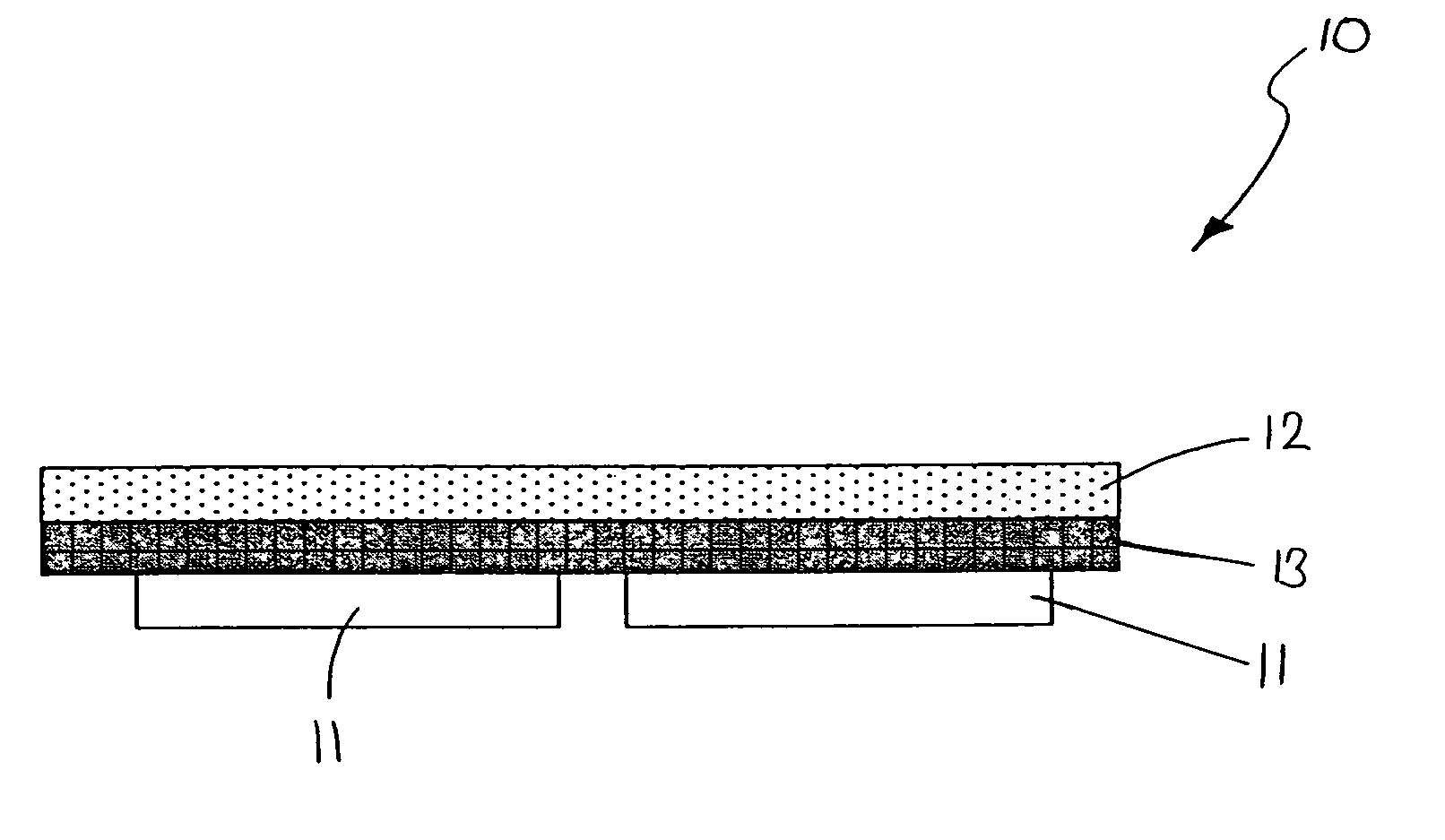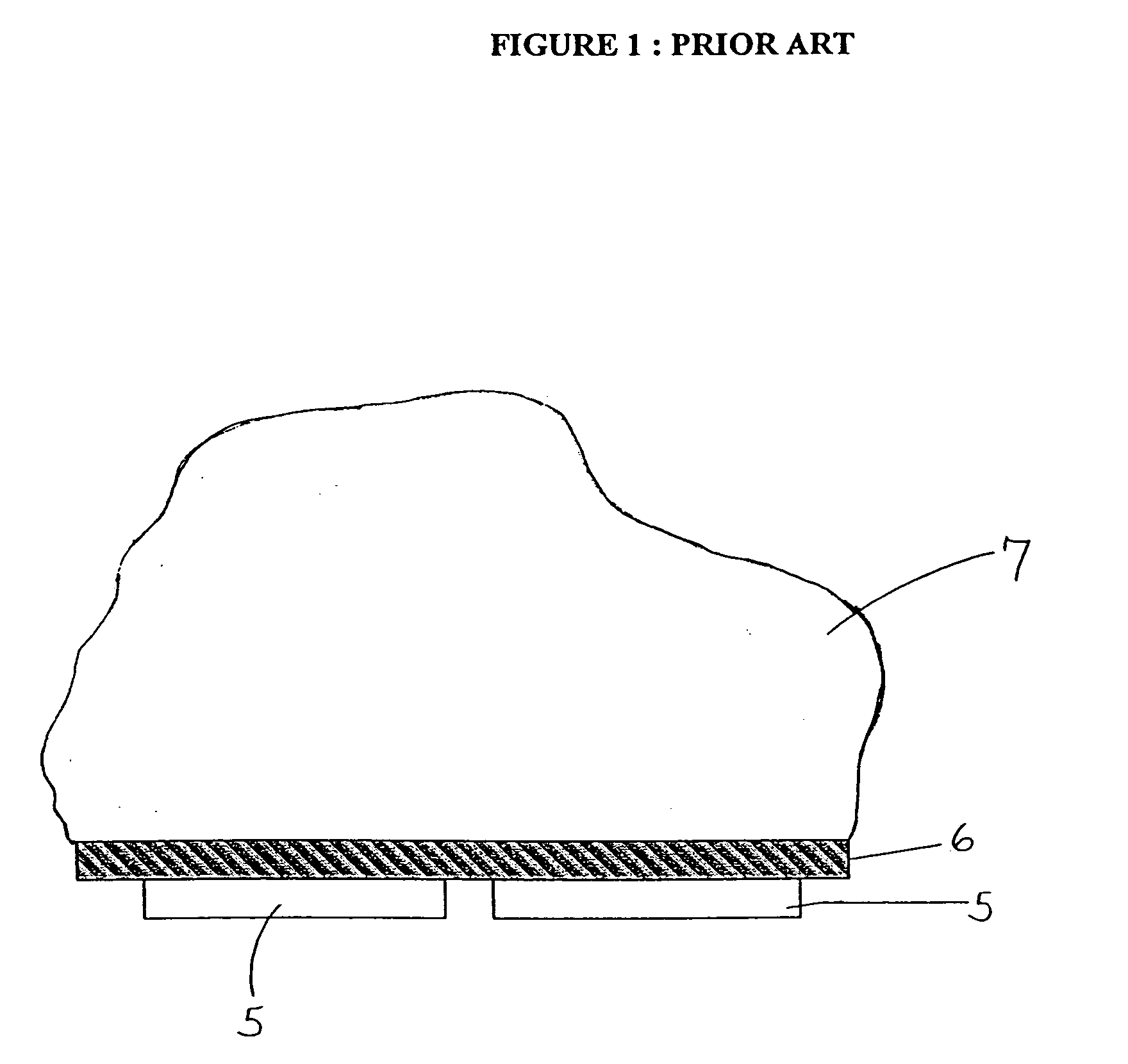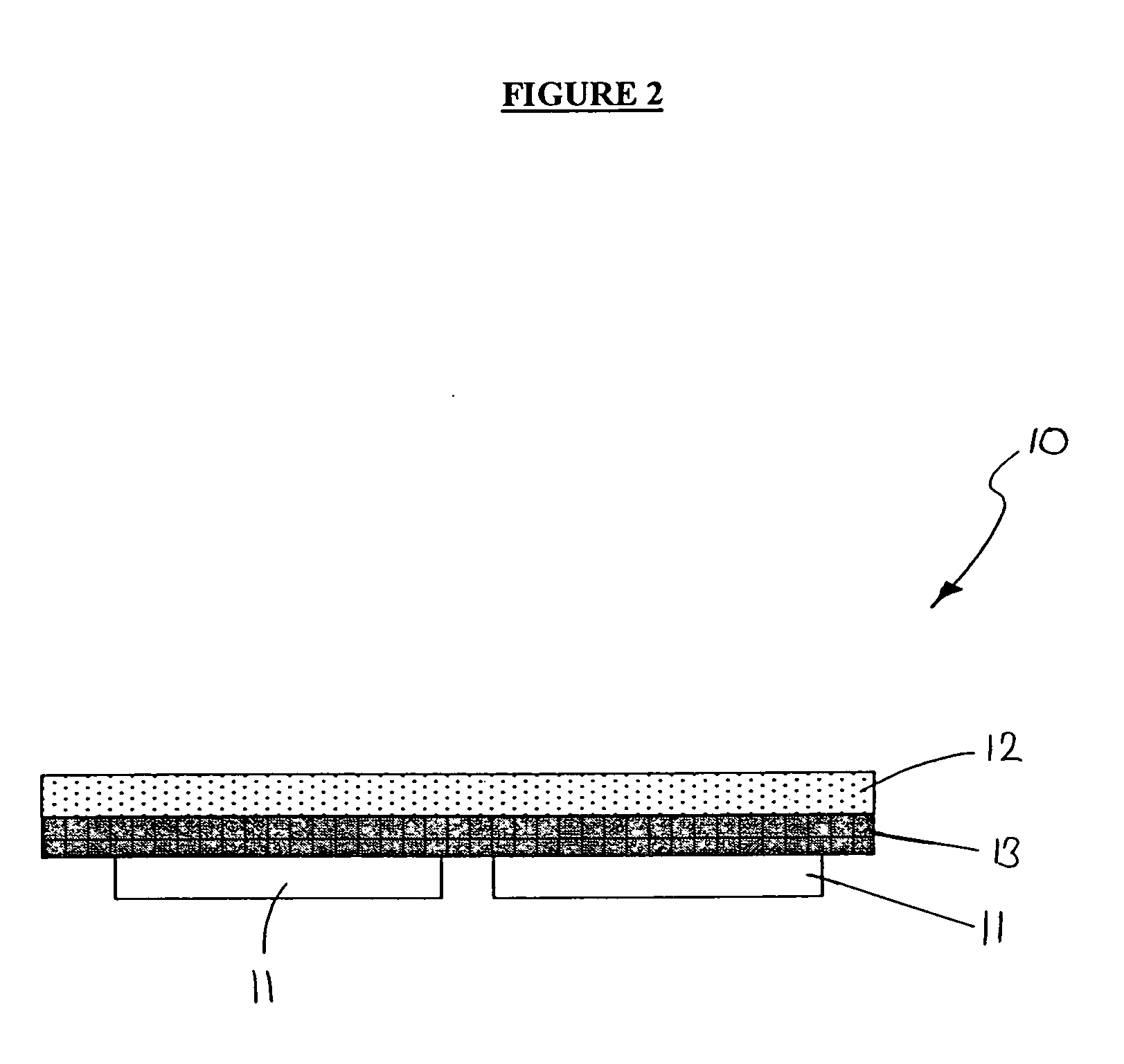Substrate process tank with acoustical source transmission and method of processing substrates
a technology of acoustical source and substrate, which is applied in the direction of cleaning hollow objects, cleaning using liquids, transportation and packaging, etc., can solve the problems of reducing production time, reducing the production efficiency of sub-conductor devices, and increasing the miniaturization of semiconductor devices
- Summary
- Abstract
- Description
- Claims
- Application Information
AI Technical Summary
Problems solved by technology
Method used
Image
Examples
first embodiment
[0029] Referring to FIGS. 2 and 3, acoustical stack 10 is schematically illustrated according to the present invention. Acoustical stack 10 comprises two piezoelectric crystals 11, rigid plate 12, and transmission layer 13. Transmission layer 13 is positioned between piezoelectric crystals 11 and rigid plate 12. Piezoelectric crystals 11 are bonded to one side of transmission layer 13 while rigid plate 12 is bonded to the other side of transmission layer 13. Bonding is accomplished through the use of a bonding agent, such as epoxy. Once the acoustical stack 10 is assembled, acoustical stack 10 is coupled to a process chamber 20 so that the side of rigid plate 12 that is not bonded to the transmission layer 13 is in direct contact with that process fluid 21 that fills the process chamber 20. When crystals 11 are activated to produce acoustical energy, acoustical stack 10 will act as an acoustical energy pathway form the crystals 11 to the process fluid 21. When a substrate 22 is subm...
second embodiment
[0033] Turning now to FIG. 4, acoustical stack 40 is illustrated according to the present invention. Acoustical stack 40 comprises first transmission layer ("TL 1") 41 positioned between the crystals 11 and the rigid plate 12. Acoustical stack 40 also has a second transmission layer ("TL 2") 42 positioned on the other side of the rigid plate 12. When acoustical stack 40 is coupled to a process chamber, similar to the coupling illustrated in FIG. 3 for acoustical stack 10, the second transmission layer 42 of acoustical stack 40 will be in contact with the process fluid. In this embodiment, the first and second transmission layers 41, 42 are used to more gradually transition the Za between the crystals 11 and the process fluid. The system is designed so that Za.sub.Cystal>Za.sub.TL1>Za.sub.Rigid Plate>Za.sub.TL2>Z-a.sub.Process Fluid. In this embodiment, preferably, crystals 11 are piezoelectric crystals, first transmission layer 41 is made of aluminum, titanium, or beryllium, rigid p...
PUM
| Property | Measurement | Unit |
|---|---|---|
| acoustical energy | aaaaa | aaaaa |
| acoustical impedance | aaaaa | aaaaa |
| transmission | aaaaa | aaaaa |
Abstract
Description
Claims
Application Information
 Login to view more
Login to view more - R&D Engineer
- R&D Manager
- IP Professional
- Industry Leading Data Capabilities
- Powerful AI technology
- Patent DNA Extraction
Browse by: Latest US Patents, China's latest patents, Technical Efficacy Thesaurus, Application Domain, Technology Topic.
© 2024 PatSnap. All rights reserved.Legal|Privacy policy|Modern Slavery Act Transparency Statement|Sitemap



